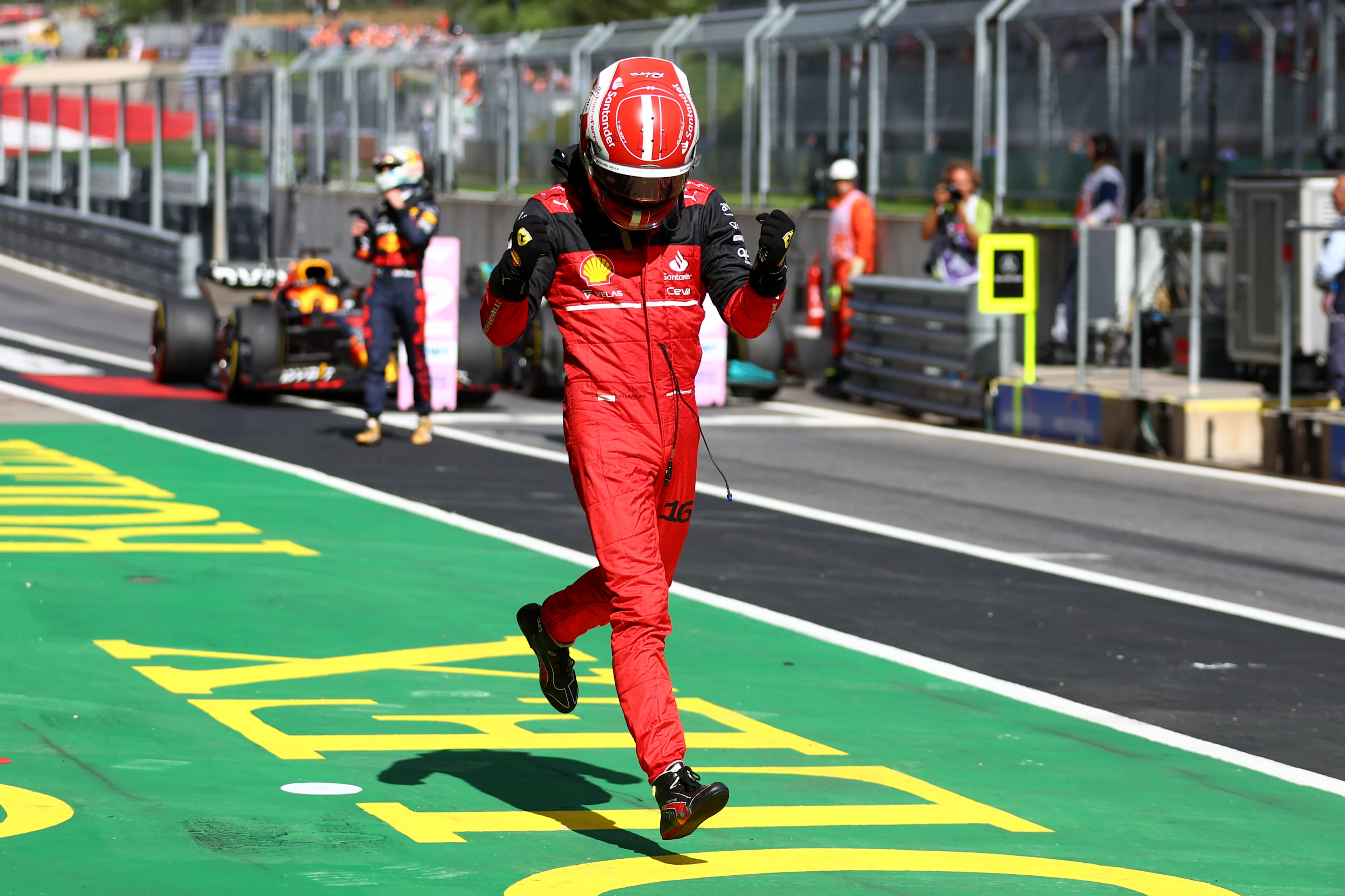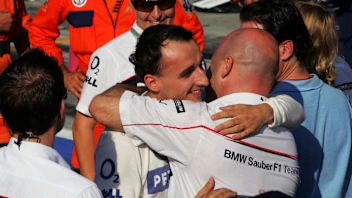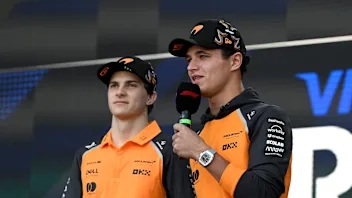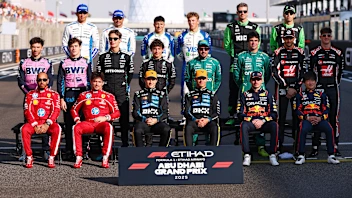Charles Leclerc took his first victory since Australia after catching and passing pole-setter and Sprint winner Max Verstappen. The Ferrari had vastly better rear tyre degradation on the day for reasons Red Bull are still struggling to understand.
Leclerc was able to force a hard pace on Verstappen from around the third lap until eventually the Dutchman didn’t have the traction needed to get out of Turn 3 well enough to defend his position into Turn 4. Leclerc overtook there easily and Verstappen was brought in for his first stop a lap later. Leclerc – backed up not far behind by team mate Carlos Sainz – ran an extra 12 laps before needing to stop.
Although Ferrari switched to match Red Bull’s two-stop strategy, their much later stops allowed them a better spacing of stints, something which the Red Bull’s tyre usage simply wouldn’t allow.
Comparing Verstappen’s pace advantage to Leclerc when on 12-laps-newer rubber (in the window between Verstappen’s first stop and Leclerc’s) to Leclerc’s advantage over Verstappen on 12-laps-newer rubber (between Leclerc’s first stop and Verstappen’s second) gives an idea of the scale of Verstappen’s problem.
Verstappen on 12-lap-newer rubber
| Verstappen | Leclerc | Verstappen's advantage | |
|---|---|---|---|
| Lap 15 | 1m 10.4s | 1m 10.7s | 0.3s |
| Lap 16 | 1m 10.0s | 1m 10.5s | 0.5s |
| Lap 17 | 1m 10.4s | 1m 10.5s | 0.1s |
| Lap 18 | 1m 10.5s | 1m 10.8s | 0.3s |
| Lap 19 | 1m 09.9s | 1m 10.6s | 0.7s |
| Lap 20 | 1m 09.9s | 1m 10.5s | 0.6s |
| Lap 21 | 1m 09.9s | 1m 10.8s | 0.9s |
| Lap 22 | 1m 09.8s | 1m 10.7s | 0.9s |
| Lap 23 | 1m 10.1s | 1m 10.7s | 0.6s |
| Lap 24 | 1m 10.5s | 1m 11.5s | 1.0s |
| Lap 25 | 1m 10.7s | 1m 11.3s | 0.6s |
As can be seen, Verstappen’s new tyre advantage over Leclerc on older tyres was only 0.59s. But Leclerc’s new tyre advantage over Verstappen is 1.34s. It’s not strictly like-for-like, as the former comparison has Leclerc on mediums and Verstappen on the hards, whereas in the latter comparison both are on the hard compound.
Leclerc on 12-lap-newer rubber
| Heading | Verstappen | Leclerc | Leclerc's advantage |
|---|---|---|---|
| Lap 28 | 1m 10.6s | 1m 09.5s | 1.1s |
| Lap 29 | 1m 10.5s | 1m 09.0s | 1.5s |
| Lap 30 | 1m 10.6s | 1m 09.6s | 1.0s |
| Lap 31 | 1m 10.9s | 1m 09.7s | 1.2s |
| Lap 32 | N/A | N/A | N/A |
| Lap 33 | 1m 11.6s | 1m 09.7s | 1.9s |
| Lap 34 | 1m 11.2s | 1m 10.0s | 1.2s |
| Lap 35 | 1m 11.2s | 1m 09.7s | 1.5s |
The medium was quicker than the hard on the day, but Verstappen’s high wear rate didn’t allow him to stay on it for long enough. Leclerc being able to stay on the initial medium almost twice as long as Verstappen was the absolute foundation of his winning advantage.
READ MORE: Verstappen says P2 was ‘better than I expected’ after ‘confusing’ tyre degradation issues
“Yesterday our deg in the Sprint race – when we pushed a bit harder at the beginning, backed off a bit at the end – but over the whole stint was, on our analysis, identical to that of Ferrari,” said Christian Horner.

“The only thing that changed overnight is the rain, the temperature and the fuel load. So, we need to understand why in that first stint our deg was significantly worse than Charles and Carlos [Sainz]. Once we got ourselves in that position, we converted immediately to a two-stop. But they had enough pace that they were able to cover with the two-stop.”
What may be significant is that there were two different tyre deg mechanisms at play – thermal deg and wear – and their relative importance seemed to change between the different conditions of Saturday and Sunday. Thermal degradation is when the tyre simply becomes saturated with heat and the structure can no longer support the full loads. This was the dominant mechanism on Saturday.
But on Sunday, with a cooler track and less rubber build-up on the surface, wear became the dominant mechanism. It may well be that within this change is the secret to the Red Bull’s lost speed.
Next Up
Related Articles
 Sauber’s best moments and most memorable liveries in F1
Sauber’s best moments and most memorable liveries in F1 The key moments of an unforgettable 2025 season
The key moments of an unforgettable 2025 season End Of Year Reports 2025Williams’ best and worst moments from 2025
End Of Year Reports 2025Williams’ best and worst moments from 2025/TEAM%20PREVIEWSHALF%20TERM%20REPORTS%20DISPLAY%20V1%20(13).webp) End Of Year Reports 2025Racing Bulls’ best and worst moments from 2025
End Of Year Reports 2025Racing Bulls’ best and worst moments from 2025 Piastri not expecting Norris’ title to change dynamics
Piastri not expecting Norris’ title to change dynamics Quiz20 quiz questions on the 2025 Formula 1 season
Quiz20 quiz questions on the 2025 Formula 1 season

